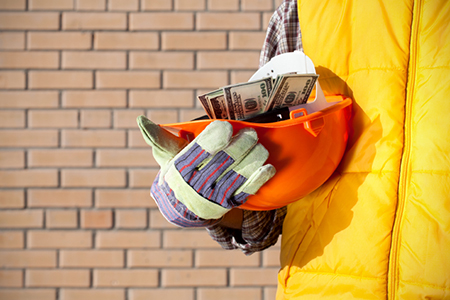 More than half of the experts surveyed in the latest Zillow® Home Price Expectations (ZHPE) Survey say the continued decline of undocumented immigration in the U.S. will drive up construction labor costs.
More than half of the experts surveyed in the latest Zillow® Home Price Expectations (ZHPE) Survey say the continued decline of undocumented immigration in the U.S. will drive up construction labor costs.
The number of immigrants in the U.S. who entered the country illegally has remained flat for more than five years, according to data from Pew Hispanic Center. The undocumented Mexican immigrant population in the United States, in particular, is now 20 percent smaller than it was in 2007.
The quarterly ZHPE survey, sponsored by Zillow and conducted by Pulsenomics LLC, asked more than 100 housing experts about their expectations for the housing market. Of those, 85 answered a question about how immigration might affect the housing market.
Immigration is an ongoing national debate, and one that’s sure to be part of the 2016 presidential race. For that reason, Zillow looked at how this issue would impact housing. Respondents said they think fewer immigrants entering the country illegally will translate to higher housing costs and more luxury home construction.
- More than two-thirds of those surveyed said an immigration slowdown would drive up construction labor costs.
- About 43 percent said a decline in the undocumented immigrant population would result in more construction jobs for U.S.-born workers and other foreign-born workers.
- Forty percent said that higher labor costs would, in turn, cause builders to focus on high-end construction, which has a higher profit margin.
- More than 30 percent of respondents tied immigration trends to the lack of inventory, and predicted that the number of new homes built will remain lower than historic norms.
“While housing policy hasn’t been a big talking point thus far in this election cycle, immigration policy certainly has, and immigration plays a big role in housing,” says Zillow Chief Economist Dr. Svenja Gudell. “The supply of homes for sale isn’t keeping up with demand – especially among entry-level homes that first-time buyers want. New-home construction has been sluggish, and homes that are getting built are aimed at a higher-end clientele. If builders hire relatively more expensive U.S.-born workers, they may continue to focus on the more profitable higher end of the market.”
Single-family home construction has declined over the past decade. More than half of the experts in the November ZHPE survey said the decline in single-family construction can be attributed to high labor costs and a lack of skilled workers.
Prices of newly constructed homes are at historic highs—the median price of new homes sold in December 2015 was almost 7 percent above the pre-recession peak of $267,000 in March 2007.
Overall home price expectations are up from a quarter ago, with survey respondents expecting 3.7 percent home value appreciation in 2016. Respondents expected 3.4 percent appreciation last quarter.
“The outlook for 2016 home price appreciation is 3.7 percent, less than the 4 percent value increase realized in 2015,” says Pulsenomics founder Terry Loebs, noting that longer-term expectations for home values continue to drift lower. “The five-year average annual rate of home value appreciation expected by the panelists is stuck at 3.3 percent, its lowest level since 2012. These subdued expectations are remarkable in light of the improvement in headline unemployment numbers, recent evidence of real income growth, stubbornly low home inventory levels, and very low mortgage rates that seem unlikely to spike anytime soon.”
For more information, visit www.zillow.com.











